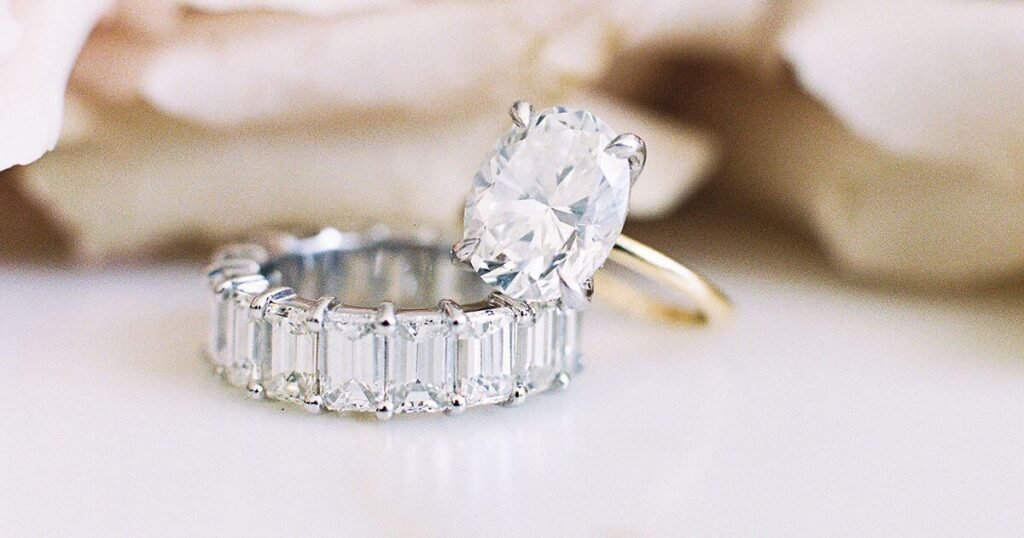The association of diamonds with marriage is a fascinating phenomenon that intertwines cultural evolution, marketing genius, and human psychology. This narrative is not just about a gemstone but about how a symbol of wealth and durability became inextricably linked with the institution of marriage, representing eternal love and commitment. This transformation didn’t happen overnight; it was a confluence of historical events, societal changes, and a particularly successful advertising campaign that solidified the diamond’s status as the ultimate symbol of marital commitment.
Historical Beginnings
To understand why diamonds became associated with marriage, it’s essential to look at the historical context of diamonds themselves. Diamonds have been admired and coveted for thousands of years, valued for their hardness and brilliance. Historically, diamonds were a luxury reserved for royalty and the aristocracy, symbols of power and strength. The use of diamonds in engagement rings can be traced back to the Renaissance period, with some of the earliest recorded instances occurring in the European aristocracy. However, this was not a widespread practice at the time and did not immediately contribute to the universal symbolism of diamonds with marriage.
The De Beers Campaign
The turning point in the diamond’s association with marriage came in the 20th century, thanks to a marketing campaign by De Beers, a company that controlled a significant portion of the global diamond market. In the 1930s, facing a decline in diamond prices, De Beers launched an advertising campaign to boost diamond demand. The campaign’s genius was in linking diamonds with the concept of everlasting love and commitment. The slogan “A Diamond is Forever,” introduced in 1947, perfectly encapsulated this idea, suggesting that a diamond, like a couple’s love, was eternal and unbreakable. This message resonated deeply with the public, transforming societal perceptions and making diamonds synonymous with engagement rings and marriage.
Cultural Shifts and Psychological Appeal
The success of the De Beers campaign was also due to broader cultural shifts and the psychological appeal of diamonds. After World War II, the United States saw a surge in marriages and a focus on domestic bliss, with the engagement ring becoming a symbol of the promise of a future together. Diamonds appealed to both emotional desires for permanence and stability and the social aspiration for status and wealth. The brilliance and durability of a diamond came to symbolize the unyielding and sparkling nature of true love.
Moreover, the practice of giving a diamond engagement ring became a rite of passage, a tangible representation of a couple’s commitment before their wedding. It also served as a signal to society of their impending union, rooted in both tradition and the desire for social acknowledgment.
Global Spread and Modern Perspectives
The association of diamonds with marriage has spread globally, transcending cultural and geographical boundaries. While the practice originated and was popularized in the West, it has been adopted by various cultures around the world, each adding their unique interpretations and significance to the tradition. Today, a diamond engagement ring is considered a standard part of the marriage proposal ritual in many societies.
However, the modern era has seen shifts in attitudes towards marriage and the symbolism of engagement rings. There is a growing preference for personalized and non-traditional rings, including those made with other gemstones or designed with ethical sourcing and sustainability in mind. Despite these changes, diamonds remain a popular choice, their enduring appeal testament to the lasting influence of the historical, cultural, and emotional factors that first forged their association with marriage.
Conclusion
The diamond’s association with marriage is a multi-faceted story of cultural evolution, marketing strategy, and human emotion. It is a testament to how a carefully crafted narrative, aligned with societal values and desires, can transform the meaning of a material object. While the way we view marriage and commitment continues to evolve, the diamond’s place in the pantheon of matrimonial symbolism stands as a reminder of the power of tradition and the enduring search for symbols that express our deepest feelings and aspirations. Whether through the brilliance of a diamond or the personal significance of another token, the essence of the tradition is the expression of love, commitment, and the hope for a forever together.

